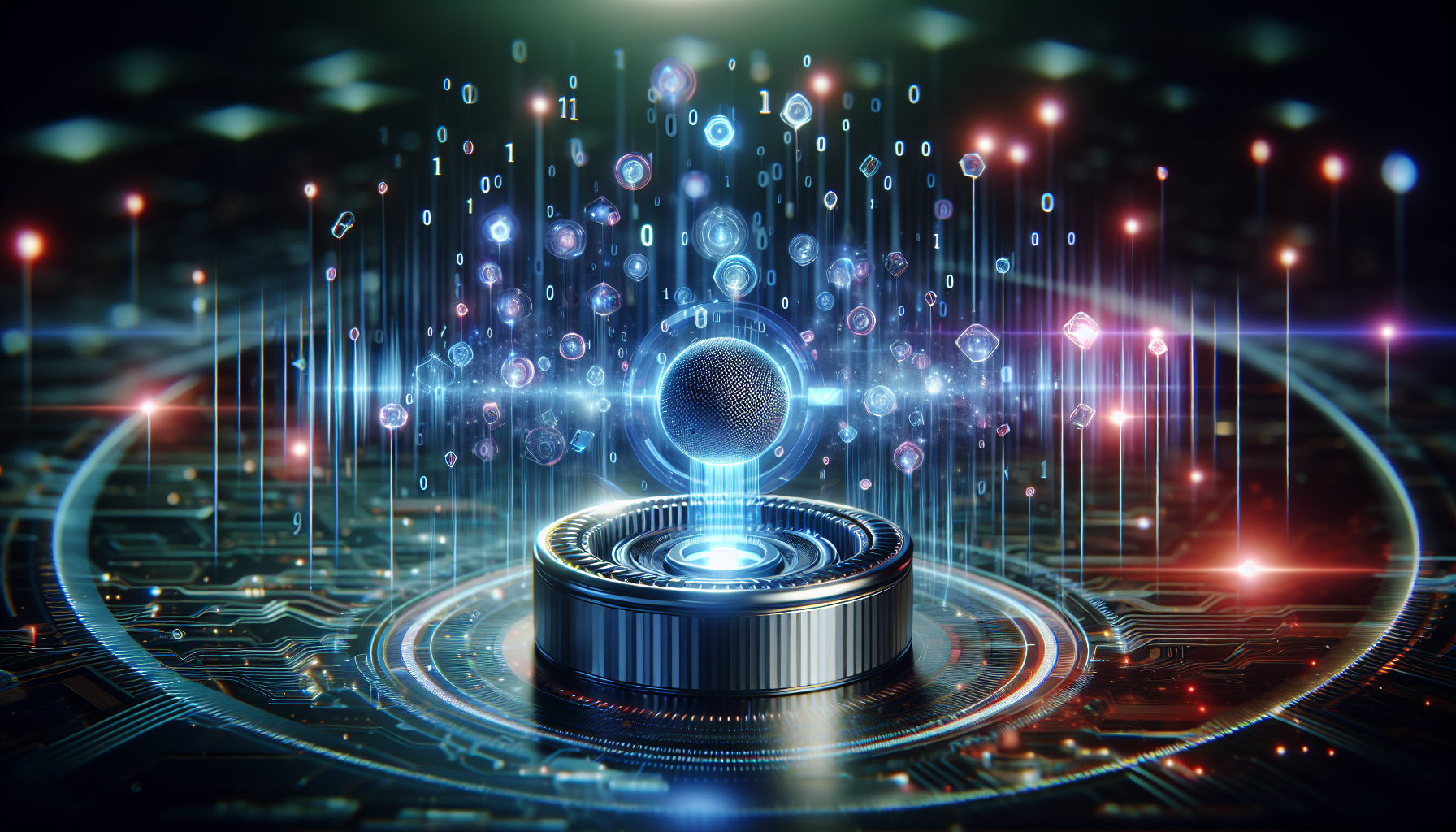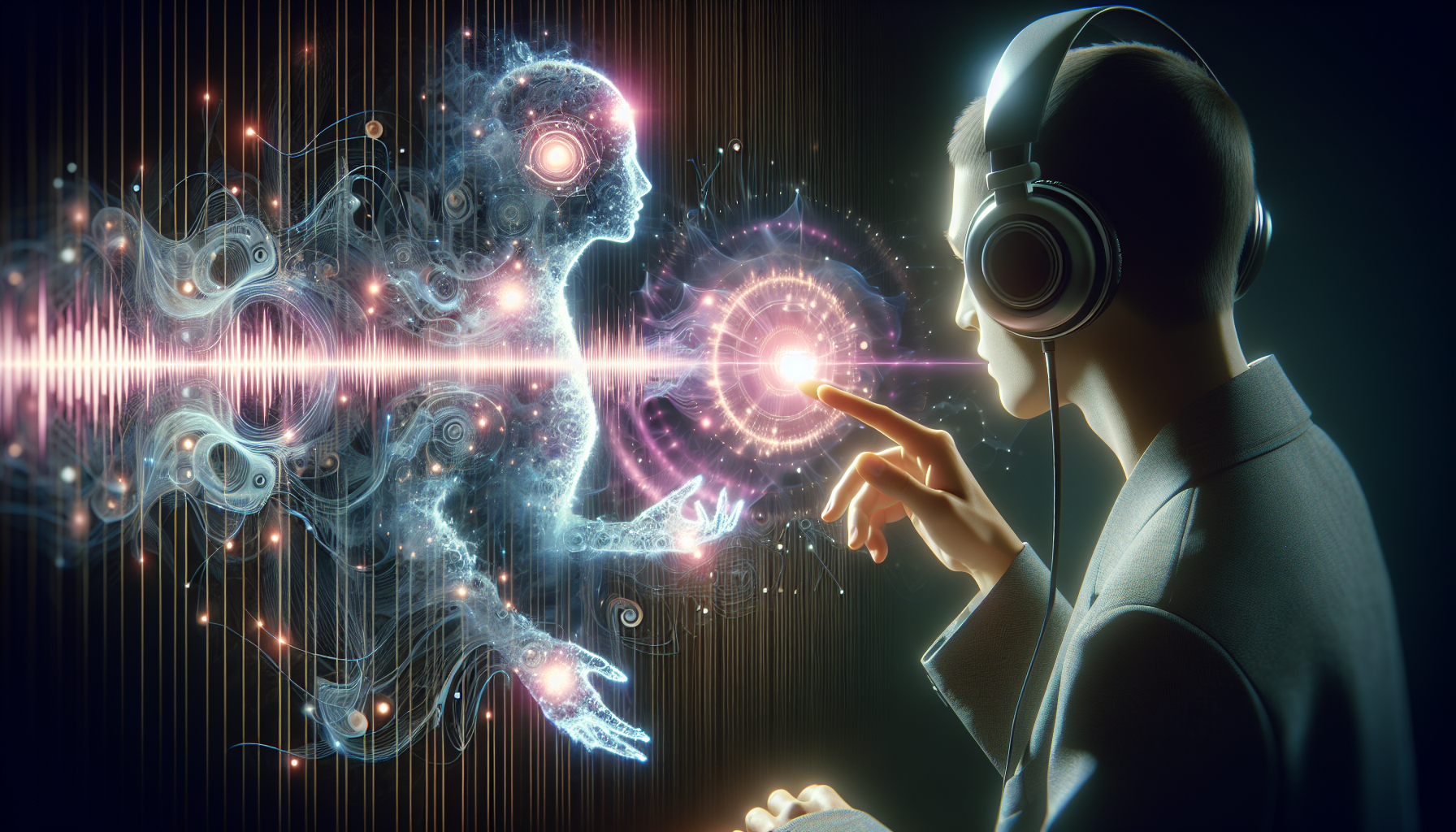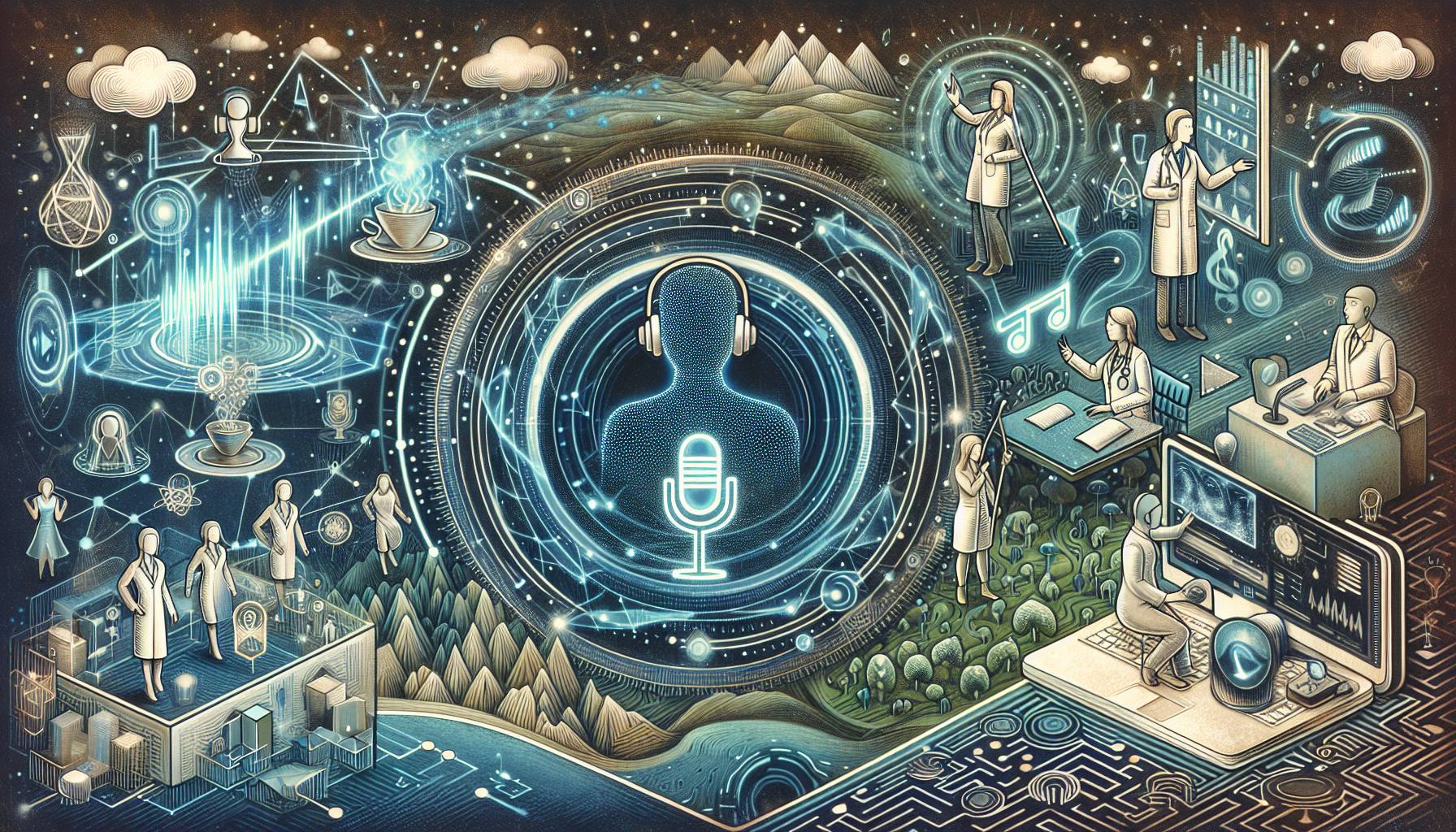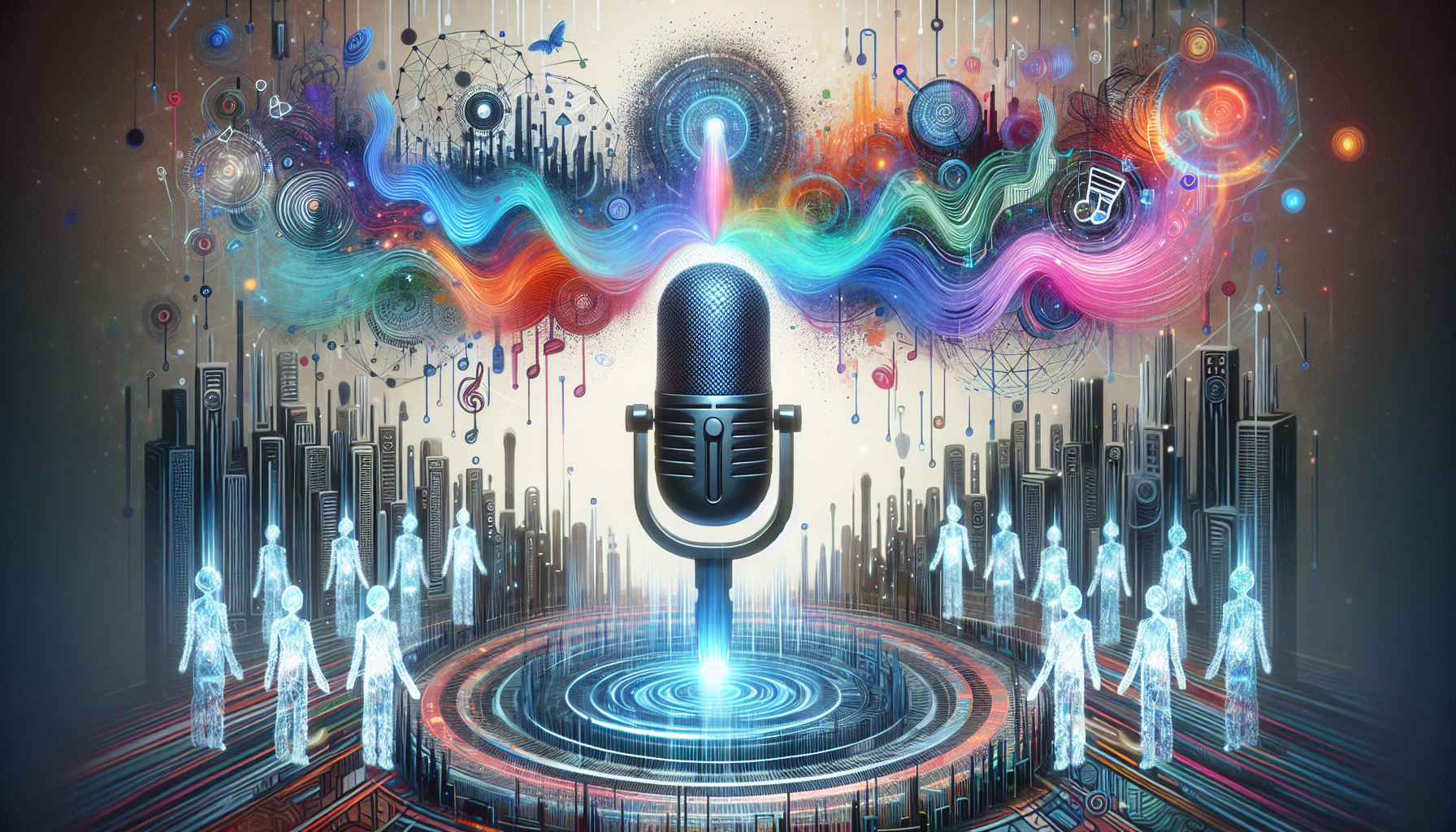Paul
Jun 21, 2024
Table of Contents |
The history of AI voice generators charts the path from early mechanical speech tools to today’s advanced AI systems. This article dives into key innovations in voice synthesis, text-to-speech technology, and the creation of custom AI voices.
Key Takeaways
- AI voice generators have evolved significantly, due to technologies like machine learning, neural networks, and natural language processing to produce highly realistic and versatile voices.
- Voice synthesis has a long history, starting with mechanical speech synthesizers in the 1800s and advancing through digital text-to-speech systems in the 20th century, leading to today’s sophisticated AI voices.
- AI voice technology has broad applications across various industries, including education, healthcare, entertainment, customer service, and marketing, offering cost-effective and scalable solutions.
AI Voice Generators

Once upon a time, the idea that a machine could speak like a human seemed like science fiction. Yet, here we are, in an era where AI voice generators are not just a reality, but a game changer in how we communicate and entertain. These voice generators, including the AI voice generator technology, have been propelled to the forefront by leaps in artificial intelligence, machine learning, deep learning, and neural networks. The sophisticated algorithms they use can replicate the nuances of human speech, including:
- modulation
- emotional expressiveness
- accents
- intonation
- pronunciation
Deep learning has significantly contributed to advancements in speech synthesis, enabling more accurate and natural-sounding AI voices.
All of these factors come together to create a symphony of languages that can be generated by AI voice generators.
Natural language processing (NLP) plays a crucial role in this technological symphony. It’s NLP that enables AI to interpret and replicate the intricacies of human language and voice recognition, laying the groundwork for the flawless voice generation we experience today. Innovations like Google’s Tacotron2 and Parallel WaveNet* have pushed the limits even further, offering us voices that are not only realistic but also imbued with a natural intonation and emotional range that was once the exclusive domain of voice artists and actors.
However, the goal goes beyond merely sounding human. The flexibility of AI voice generation is truly astonishing. With technologies like zero-shot speaker adaptation*, a single AI model can generate a variety of voices with unique characteristics, making it possible for one AI voice to embody a multitude of personas. This flexibility enables the creation of custom voices and brings the dream of having one’s own AI voice within reach for many.
Glossary of Terms
| 📝 Term | Definition |
|---|---|
| 💬 Natural Language Processing (NLP) | NLP enables AI to understand, interpret, and replicate human language and voice recognition, forming the basis for accurate voice generation. |
| 🗣️ Tacotron 2 | An advanced AI system developed by Google that generates human-like speech from text with natural intonation and emotional range. |
| 🌊 Parallel WaveNet | A model developed by Google DeepMind that produces realistic and natural-sounding speech. |
| 🔄 Zero-Shot Speaker Adaptation | A technology that allows a single AI model to generate multiple unique voices with minimal training data, enabling the creation of custom voices. |
| 🎭 Custom AI Voices | AI-generated voices that can be personalized for different applications, making it possible to have a digital replica of one's own voice. |
Early Developments in Voice Synthesis

The origins of voice generation predate the advent of digital technology. In the early 1800s, pioneers like Charles Wheatstone set the stage with the first mechanical speech synthesizers. These machines may seem crude by today’s standards, but they were nothing short of revolutionary, capable of producing vowel sounds and even full words using vibrating reeds. This era of experimentation laid the foundation for our understanding of speech mechanics and phonetics, as scientists like Robert Willis, a contemporary of Wheatstone, uncovered the relationship between vocal tract shape and vowel sounds through vocal synthesis. Willis conducted experiments that demonstrated how different shapes of the vocal tract influenced the sounds produced.
The digital revolution followed thereafter. The late 1950s marked a turning point with the creation of the first computer-based speech synthesis systems. These early systems were the progenitors of today’s sophisticated text-to-speech software, marking the beginning of a new era where human speech could be generated, manipulated, and replicated by machines.
The transition from mechanical to digital technology marked a pivotal moment in the history of voice generation. It opened up a world of possibilities and set the stage for the sophisticated systems we have today. It was a time when the seeds were planted for future innovations that would one day give rise to:
- the realistic AI voices we now take for granted
- the ability to generate speech from text
- the development of voice assistants like Siri and Alexa
- the integration of voice technology into various devices and applications
This transition was a turning point in voice generation and paved the way for the advancements we see today.
Text-to-Speech Technology
Over the decades, text-to-speech technology transitioned from rudimentary mechanical systems to advanced digital solutions and speech technology that could emulate human speech in numerous languages. This journey has seen significant milestones, such as the introduction of the Kurzweil Reading Machine in 1976, which brought the joy of reading to the visually impaired. These machines, although expensive and limited by the technology of the time, were groundbreaking in their ability to convert written text into lifelike speech.
The 1980s saw further advancements with Bell Labs’ development of a multilingual text-to-speech system that employed natural language processing techniques and voice synthesis, a precursor to the AI voice generators we use today. By the time Microsoft released Narrator in 1999, text-to-speech technology had become an integral part of everyday computing. Microsoft designed Narrator, a screen reader included in the Windows operating system, to assist users with visual impairments by reading out the text displayed on the screen.
Making Voices Sound Natural
The ultimate goal of text-to-speech technology has always been to produce a natural-sounding voice. In the late 80s and early 90s, engineers like Ann Syrdal at AT&T Bell Laboratories worked tirelessly to soften the harsh electronic edges of synthesized speech and imbue it with more human-like qualities. By incorporating softer consonants and focusing on the nuances of inflection and tone, and prosody, they took significant strides towards creating generative voice models that could engage listeners with their lifelike speech and voice quality.
One of the crowning achievements of this era was the DECtalk system, which used a formant synthesis method to emulate human voice characteristics more closely than ever before. Inspired by the work of Dennis Klatt at MIT, this system represented a leap forward in making machines talk in a way that was both understandable and pleasant to listen to.
Timeline of AI Voice Generation
| 📝 Year | Event |
|---|---|
| 🕰️ 1800s | Early Mechanical Speech Synthesizers: Pioneers like Charles Wheatstone developed the first mechanical speech synthesizers capable of producing vowel sounds and full words using vibrating reeds. This laid the foundation for understanding speech mechanics and phonetics. |
| 💻 1950s | Digital Revolution: The late 1950s marked the creation of the first computer-based speech synthesis systems, leading to the development of today’s sophisticated text-to-speech software. |
| 📚 1976 | Kurzweil Reading Machine: Introduced by Ray Kurzweil, this machine brought reading to the visually impaired by converting written text into lifelike speech. |
| 🌐 1980s | Bell Labs' Multilingual Text-to-Speech: Bell Labs developed a multilingual text-to-speech system using natural language processing and voice synthesis, paving the way for modern AI voice generators. |
| 🔊 1980s-1990s | Making Voices Sound Natural: Engineers like Ann Syrdal at AT&T Bell Laboratories worked to make synthesized speech more human-like, leading to the development of the DECtalk system. |
| 🎙️ 1987 | DECtalk System: Using formant synthesis, DECtalk emulated human voice characteristics closely, inspired by Dennis Klatt's work at MIT. |
| 🖥️ 1999 | Microsoft Narrator: Microsoft released Narrator, a screen reader for the visually impaired, making text-to-speech technology a part of everyday computing. |
Custom and Own AI Voices

AI voice generators excel particularly in the domain of voice cloning and voice synthesis technology, providing the ability to create remarkably accurate digital replicas of one’s voice. This is the ultimate personalization – your own voice, replicated and digitized for use in a myriad of applications. Platforms like Lalals.com exemplify this capability, requiring only a short sample of clean audio to craft a custom voice clone that can sing, rap, or speak in your stead.
Beyond generating speech, you can also fine-tune your digital voice to meet specific needs. Adjustments to pitch, emphasis, and speed are all at your fingertips, granting complete control over how your AI voice expresses itself with voice customization. This level of customization is not just a novelty but a powerful tool. It can be used for professional voiceovers, musical endeavors, or even as a voice changer to explore new creative territories.
As we see more digital artists and voice actors sell direct access to their AI-generated voices, we’re witnessing an intersection of technology and artist consent that’s reshaping the landscape of voice generation. This trend points to a future where unique voices are not just heard but shared and experienced in entirely new ways.
AI Singing Voices and Music
Specifically, AI singing voices have shaken the music industry with vocal synthesis. Some platforms that offer AI-generated vocals include:
- Lalals.com: Allows users to create entire songs with AI-generated vocals simply by inputting lyrics.
- With our AI Music Composer you don’t even need to input any lyrics!
- ACE Studio: Provides musicians with the tools to transfer vocal styles to different voice models or edit melodies offline.
- Synthesizer V: Offers tools for editing and synthesizing vocals.
The technology has advanced to the point where the AI singing voice can be a tool for unleashing new musical ideas and reaching a global audience.
Artists like Grimes and Holly Herndon demonstrate that ethical considerations are paramount. They have taken proactive steps to control how their AI voices are used by sharing royalties or selling access via a Decentralized Autonomous Organization (DAO). This new paradigm comes with challenges, as shown by the online sensation of the AI-generated song ‘Heart on my Sleeve.’ It blurred the lines between creation and imitation before its removal from the internet.
AI singing voices and music hold immense potential. From creating vocals for YouTube videos to acting as a voice changer for song covers, the creative possibilities are endless. With improvements like the Bluewaters AI algorithm, the quality and realism of these AI voices continue to reach new heights, making them more appealing than ever to content creators and audiences alike. The use of an ai voice generator and ai generated voice sound technology has truly impacted the way we experience music, and ai singers are at the forefront of this innovation.
When it comes to using AI-generated celebrity voices, the legal landscape gets a bit more complex. From adhering to publicity rights to avoiding false endorsements, there’s a lot to consider. While it’s legal to release songs featuring AI representations of celebrity voices, it’s crucial not to claim or imply that the actual celebrity personally contributed to the track. So what are all the legal implications?
Applications of AI Voice Technology

A variety of industries have adopted AI voice generation, demonstrating its versatility and effectiveness. Here are some examples:
- In educational contexts, AI voices make learning materials more accessible and engaging.
- In healthcare, they assist in patient communication and information dissemination.
- In the entertainment industry, AI voices are used for dubbing, voice acting, and voice assistants.
- In customer service, AI voices can be used for automated phone systems and virtual assistants.
- In marketing and advertising, AI voices can be used for commercials and promotional videos.
The cost and time savings are considerable, especially when compared to traditional recording methods, making AI an attractive option for producing professional voiceovers on a large scale.
The marketing world has embraced AI voices to increase engagement and retention in their multimedia content, with AI-generated voiceovers adding a layer of professionalism and polish. For global businesses, the capacity to generate speech in over 100 languages is invaluable, allowing them to connect with a diverse audience without language barriers.
Moreover, AI voice technology is changing customer service, with scalable solutions that can handle a high volume of inquiries efficiently. The integration of AI voices in Interactive Voice Response (IVR) systems and chatbots has not only improved the user experience but also offered a more personalized approach to customer interactions.
Future Prospects for AI Voice Generation

AI voice generation faces a promising future, with upcoming developments set to further transform the field. As neural networks become more sophisticated, mimicking the intricate workings of the human brain, we can expect AI voices that understand and replicate speech patterns with unprecedented accuracy. Emotional expression, too, will see enhancements, leading to interactions that feel more genuine and human-like.
Language and dialect support will continue to expand, making AI-generated voices even more accessible to people worldwide. This inclusivity will not only break down linguistic barriers but also foster a deeper connection between content and its audience. However, we must balance these technological strides with ethical considerations. The industry must proactively address the potential for misuse of AI voice technology, ensuring responsible use of this powerful tool.
Looking ahead, the future holds both vast and exciting possibilities. Some of the potential uses for AI voice generation include:
- Creating more engaging digital content
- Enhancing user experiences
- Improving accessibility for individuals with disabilities
- Streamlining customer service interactions
- Personalizing virtual assistants and chatbots
AI voice generation is poised to become an even more integral part of our digital landscape. Both businesses and individuals alike must find the best AI voice generator.
Summary
From the mechanical wonders of the 1800s to today’s digital virtuosos, AI voice generators have made an incredible journey. Initially a novelty, they are now a necessity, providing realistic, human-like voices that entertain, educate, and assist us daily. As we approach greater advancements, the future of AI voice generation appears as intriguing as its history. Let’s embrace these digital voices not just as tools, but as the harmonious companions they have become in our connected world.
Frequently Asked Questions
All you need to know about Lalals.
What is text-to-speech technology?Text-to-speech technology is the artificial production of human voice through computer-based systems, making life easier across various professions. It allows written text to be converted into spoken words effortlessly. |
When was the first speech synthesis system created?The late 1950s marked a significant milestone in the development of voice generation with the creation of the first computer-based speech synthesis systems. |
How do modern AI voice generators differ from early speech synthesis?Modern AI voice generators differ from early speech synthesis by using advanced machine learning and neural networks to create realistic, natural-sounding speech with emotional range and multiple languages, making them far more sophisticated. |
Can AI voice generators create custom and personal voices?Yes, AI voice generators can create custom and personal voices by utilizing machine learning techniques and a short audio sample. This allows for the development of digital replicas of a person’s own voice. |
What are some ethical considerations surrounding AI voice generation?Ethical considerations surrounding AI voice generation include responsible use, prevention of misuse, and respect for artist consent when using voice data. Be mindful of these factors to ensure ethical practices in AI voice generation. |
Convert Your Voice with AI
Make your voice sound like those of famous arists.
Join Lalals and use our hyper-realistic voice converter now.